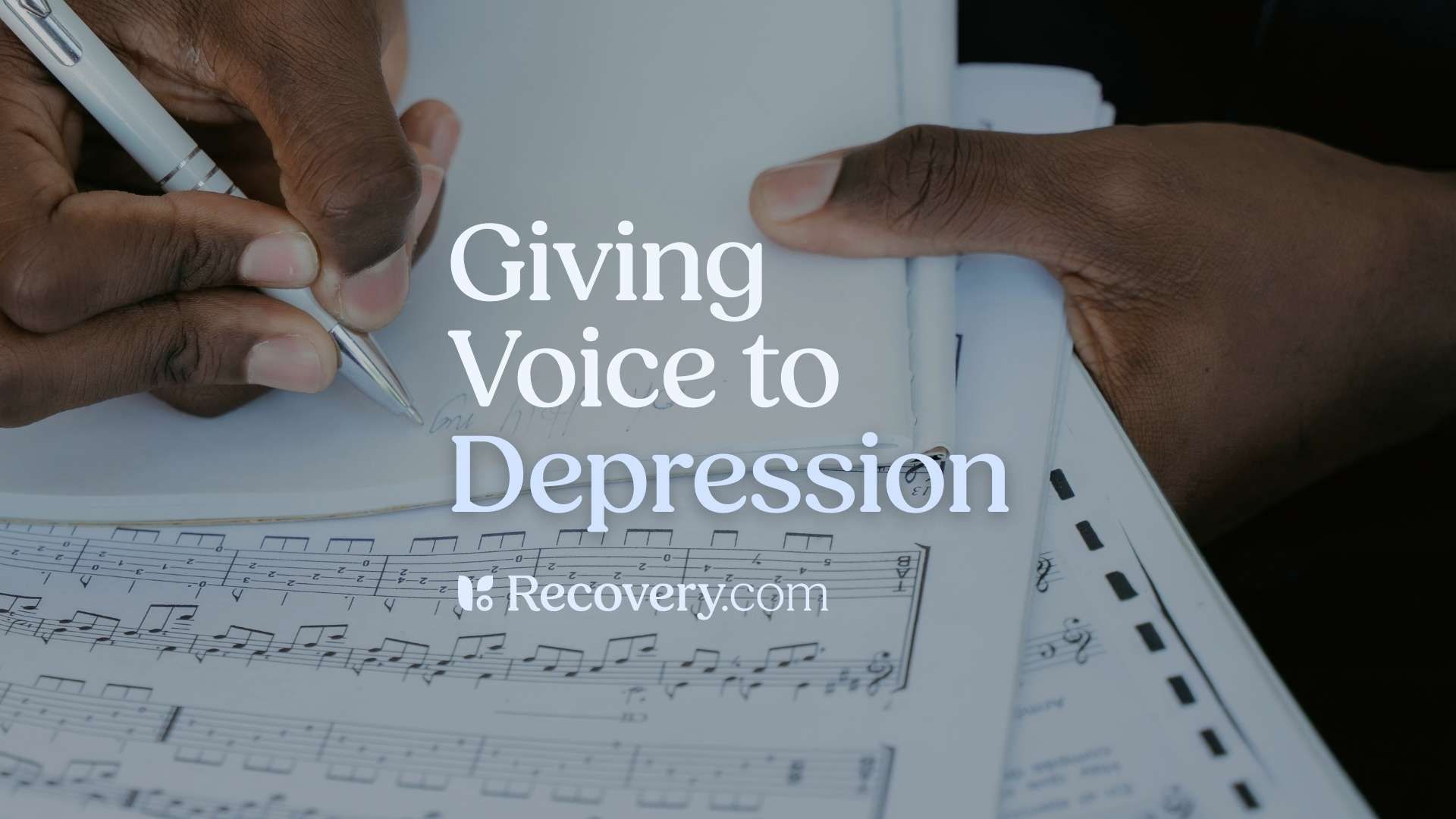Does a Good Therapeutic Relationship Matter in Therapy?



As a Clinical Research Specialist, writer, and person with lived experience in mental health recovery, Grace blends clinical research with honest storytelling to inspire healing and hope. In her free time, she enjoys writing books for young adults, an age when she needed stories the most.

Dr. Mala, is the Chief Clinical Officer at Recovery.com, where she develops impartial and informative resources for people seeking addiction and mental health treatment.




As a Clinical Research Specialist, writer, and person with lived experience in mental health recovery, Grace blends clinical research with honest storytelling to inspire healing and hope. In her free time, she enjoys writing books for young adults, an age when she needed stories the most.

Dr. Mala, is the Chief Clinical Officer at Recovery.com, where she develops impartial and informative resources for people seeking addiction and mental health treatment.
- As with other people in your life, you form a relationship with your therapist.
- The nature of this therapeutic relationship greatly affects treatment.
- A positive relationship bolsters your healing; negative relationships can hamper it.
Effective therapists possess empathy, compassion, and trustworthiness that make them seem like superhuman healers. Those who find a good therapist often stay with them for years, which can strengthen their overall healing process and improve their resiliency.
Building a rapport and sense of trust with your therapist can encourage you to share freely and feel safe doing so. This is crucial—if you’re going to therapy but don’t feel comfortable talking to them, you won’t reap the same benefits.
Many therapists encourage you to stay open-minded to the idea of switching therapists, so you can find your best fit. But how do you know what a ‘good fit’ is? And does it really matter?
Defining The Therapeutic Relationship
Therapeutic relationships build off mutual engagement, collaboration, and the bond patients and therapists form.1 Much of therapy’s success comes from this relationship, even more so than the type of therapy used and the therapist’s specific training. This positive effect exists in both medical and psychological treatment, and improves outcomes in both.2
The therapeutic relationship starts to form at your very first session. It can strengthen with each session as you and your therapist set goals, collaborate, and form a space you feel safe in.2
Benefits and Examples of a Positive Therapeutic Relationship
Ultimately, positive therapeutic relationships link to treatment success and healing.2 You’re more likely to continue with treatment and feel hopeful for change if your therapist makes you feel understood, safe, and an important part of the treatment process.
Setting goals together and working to achieve them teaches practical skills for navigating future problems and concerns—without relying on advice from a therapist. This grows your agency and sense of self-efficacy, bolstering your hope and overall well-being.
Here’s how a positive therapeutic relationship could look in practice:
- You reach your first therapy appointment, nervous and unsure of how it’ll go. The therapist notes your discomfort and immediately works to reverse it: smiling, welcoming you, and introducing themselves. They ask questions about yourself and what brought you to therapy, listening attentively and engaging in the conversation with their body language and expressions. You feel cared for and safe, and start opening up more. Based on your first or second session, your therapist outlines a few goals you’ll work on together and asks you how they sound. You feel like a collaborative part of your treatment, which makes you want to engage more.
Effects and Examples of a Negative Therapeutic Relationship
A negative therapeutic relationship can disrupt treatment and reinforce stigma about therapy and mental illness as a whole. You may feel uncomfortable, shamed, and belittled with a therapist that isn’t the right fit for you. But if that happens, don’t worry; you can always switch therapists. A therapist who isn’t the right fit for you could be perfect for someone else, and vice-versa.
An example of an unhelpful therapeutic relationship could look something like this:
- You go to your first session with the new therapist. Right away, they don’t exude compassion or much interest in you and your issues. You start to feel uncomfortable, and don’t trust them with your pain. They ask a few questions about yourself and why you’re there, but other than that, you feel pressured to fill the silence. They suggest modifications and changes to your behavior in a way that makes you feel diminished and a little embarrassed. You leave and cancel your next appointment.
How Therapists Can Foster a Good Relationship
Some people come to therapy with past misconceptions, shame, and nervousness. Therapists can alleviate these anxieties through the way they treat their patients and how they treat the act of getting help.
For example, a kind, empathetic, and patient therapist can soothe initial nerves and validate their patient’s desire for getting help. They can express gratitude for their patient seeking care, and for trusting them with their emotions and struggles. These efforts connect the therapist and patient as humans, which can spark an immediate, positive affect on their relationship.
Aspects like these are key to forming a positive therapeutic relationship:
- Listening without interrupting
- Validating fears and emotions
- Compassion
- Identifying and setting goals together
- Communicating regularly about your sessions and how they’re going
How You Can Contribute
A good therapeutic relationship takes effort on both sides, just like other relationships. Here’s what you can do (if and when you feel comfortable):
- Recognize your therapist can’t, and shouldn’t, think for you
- Engage in the goals you work on and any homework they may give you
- Communicate as openly as you feel comfortable
- Stay open-minded during your sessions
- Let your therapist know what is and isn’t working for you (they want to know!)
Signs You And Your Therapist Are a Good Fit
How you feel towards your therapist and the quality of your sessions can clue you into the nature of your connection. Do you enjoy talking to them? Do they make you feel safe and valued? Do you ever feel silly or foolish for opening up to them?
Reflect on your therapy itself too. Do you know what your treatment goals are, and has defining them been a collaborative process with your therapist? Do you feel like you’re making progress toward them? Do you feel hopeful in your recovery?
Here are those questions laid out as boxes you can check to know if you’re a good fit:
- You feel comfortable with your therapist.
- You feel like they genuinely want to help and understand you.
- You appreciate them as a person and feel appreciated in return.
- You set clear goals and collaborate to meet them.
- You feel hopeful and sense the tangible possibility of healing.
If you find you can’t check any of these boxes, or even feel the opposite, that’s a good sign you and your therapist aren’t the right fit. Remember, that’s okay. View any poor fits as a helpful learning experience that gets you closer to the right one.
What to Do If Your Therapist Isn’t The Right Fit
First, know it’s acceptable and normal to not click with your therapist. Who you will feel comfortable with won’t be the same as your friends, or people in TV shows and movies.
Therapists want you to feel comfortable and understood, and trying a new therapist is often one of the best ways to accomplish that. They’re used to it and don’t view it as a personal attack–not at all. People switch therapists for financial reasons, personal reasons, scheduling constraints, and much more.
Before you terminate your sessions, first have a conversation with your current therapist. You can bring up your concerns and what might make you feel more comfortable. For example, you might say you’re not seeing as much progress as you hoped and don’t feel like you’re learning coping strategies. You could also explain the behaviors or attitudes of your therapist that may make you less comfortable engaging in treatment. See what they say, and how they plan on addressing your concerns.
You may find a solution and feel comfortable continuing services. If you don’t, here’s what you can do:
- Cancel any upcoming appointments with your current therapist.
- If you’re comfortable with it, explain that you’ll be leaving and looking for another therapist. Your current therapist can help connect you to other options.
- Search for other therapists in your location or ones with online availability.
- Vet your new options for the qualities or treatment modalities you’d like to see after your first experience. Here’s 11 tips for finding the right therapist.
- Set up your first appointment; you can voice your concerns and preferences right away so your new therapist understands your past experience and treatment goals.
Empathy And Connection to Power Your Healing
In a good therapeutic relationship, you might feel like your therapist has superpowers. They help you see different perspectives, set personal goals, and feel–perhaps most importantly–that you and your experiences matter. You’ll ultimately learn to become your own therapist, navigating challenges and day-to-day life with new skills and coping strategies you learned in therapy.
-
Stubbe, Dorothy E. “The Therapeutic Alliance: The Fundamental Element of Psychotherapy.” Focus: Journal of Life Long Learning in Psychiatry, vol. 16, no. 4, Oct. 2018, pp. 402–03. PubMed Central, https://doi.org/10.1176/appi.focus.20180022.
-
“Therapeutic Alliance.” Physiopedia, https://www.physio-pedia.com/Therapeutic_Alliance.
Our Promise
How Is Recovery.com Different?
We believe everyone deserves access to accurate, unbiased information about mental health and recovery. That’s why we have a comprehensive set of treatment providers and don't charge for inclusion. Any center that meets our criteria can list for free. We do not and have never accepted fees for referring someone to a particular center. Providers who advertise with us must be verified by our Research Team and we clearly mark their status as advertisers.
Our goal is to help you choose the best path for your recovery. That begins with information you can trust.









